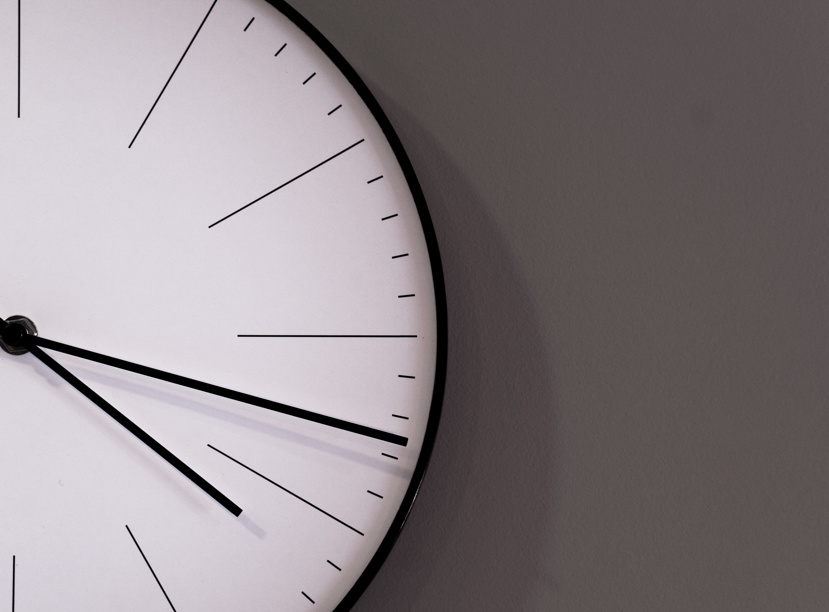Do you know precisely where RRSPs, RRIFs, and TFSAs fit into your retirement plans?
By Olev Edur
The deadline for contributing to an RRSP for the 2021 tax year is March 1, 2022, and the period leading up to that annual deadline has therefore come to be known as RRSP season, a good time to review how and to what extent you’re using the various tax-assisted savings plans—RRSPs, RRIFs, tax-free savings accounts (TFSAs), and other types of registered plans—to finance your retirement. You have lots of options, but how do you put them together in a cohesive strategy to maximize your retirement prospects?
Your Strategy
First, you need a plan. “Your strategy will depend on where you are in terms of retirement,” says Jeet Dhillon, a vice-president and senior portfolio manager at TD Wealth Private Investment Counsel in Toronto. “Some seniors are not yet retired, some are just entering retirement, and some are well into retirement. It all depends on your cash flow and your income needs. You need to take a holistic approach and tailor your plan to your needs.”
Anthony Maiorino, a vice-president and director at RBC Wealth Management Services in Toronto, agrees: “Retirement planning is not a one-size-fits-all process. You have to understand how much income you need and where you’re going to take it from. And your plan may change from year to year.”
Maximizing
If you’re not yet retired, for example, the general objective is to save as much as you can afford to and maximize the use of both RRSPs and TFSAs. But there are many situations in which this general rule may not apply.
“If you have no employer pension, for example, you’ll have to look to your savings and other sources of retirement income,” says Jamie Golombek, a managing director of tax and estate planning with CIBC Private Wealth in Toronto. These other income sources would, for most retirees, include government benefits such as the Canada Pension Plan (CPP), Old Age Security (OAS), and for those with limited retirement income prospects, the Guaranteed Income Supplement (GIS).
For some, other sources might include rental income or wages from continued employment. According to Canada Revenue Agency (CRA) taxation data released in 2020, for example, more than 1.1 million tax filers aged 65-plus—over 20 per cent of that age cohort—reported earning some income from employment, businesses, or professions on their 2017 tax returns.
RRSPs or TFSAs?
For most retirees, maximizing tax-assisted savings is important, but when resources are limited and you can’t manage to contribute to both an RRSP and a TFSA, choosing which type of plan should come first can be critically important.
Tax Bracket
RRSPs tend to be advantageous if you have a high income now. “Ideally, you’ll be putting money into the RRSP when you’re in a high tax bracket and taking it out when you’re in a lower tax bracket,” Dhillon says. Your contributions can be deducted from your income, so you get a tax break now and pay tax on the money at a lower rate when you withdraw it later, when your income will presumably be lower.
On the other hand, if your retirement income will be low enough that you’ll be entitled to GIS, then RRSPs can be problematic and the TFSA should be given priority. That’s because every dollar you withdraw from an RRSP will reduce your GIS entitlement by 50 cents. “When you’re planning, you have to take into account the effect on government benefits such as OAS and GIS,” Golombek says. “Money taken from an RRSP or RRIF could reduce those benefits, whereas money taken from a TFSA doesn’t affect them—it doesn’t even show up on your income tax return.”
Planning tool
“The TFSA is a beautiful planning tool,” Dhillon says. “You never have to pay any tax on withdrawals, and TFSAs don’t have rules like the requirement that RRSPs must be converted to RRIFs at age 71 or the requirement that you must take the money out at some point—you don’t need to take money out until you need it.”
Of course, you don’t get a tax deduction for TFSA contributions, as you do with an RRSP, but as Golombek points out, if your retirement income is going to be quite high, you’ll have to pay tax on RRSP withdrawals anyway—and may also end up having your OAS benefits clawed back.
“In making withdrawals from your RRSP, you have to be mindful of the OAS clawback,” says Wilkie Kam, a senior investment advisor and portfolio manager with BMO Private Wealth in Vancouver. For 2022, the 15 per cent clawback begins when your income exceeds $81,761.
A Matter of Timing
You can use timing to your advantage in a number of ways when it comes to your retirement finances. For example, while you can start receiving your CPP benefits at any age after 60, the longer you wait, the greater your benefits will be (until age 70, when they will no longer increase). The same applies to OAS, which you can start receiving at age 65 but defer until 70 for greater benefits.
Increase
“If you don’t need the money right away, it’s better to defer these income sources as long as possible, because the longer you wait, the more the benefits will increase, and they go up quite a lot,” Dhillon says. “CPP, for example, will be 42 per cent higher at age 70 than at age 65.”
The same general rule may apply to your registered savings. “If you have both registered and non-registered savings, you may choose to start with the non-registered money, and then use the registered plans,” Maiorino says. Golombek agrees: “In general, you should try to leave your registered savings, such as RRSPs and TFSAs, as long as possible, because of the tax-free compounding.”
Low Income
If, however, your income is going to be low enough in retirement that you’ll be entitled to GIS, it may make more sense to take CPP and OAS as early as possible and to use up your RRSP or even perhaps deplete it before age 65, so that your GIS can be maximized. You needn’t worry about a TFSA, however; since withdrawals won’t affect GIS, you should still leave a TFSA to compound tax-free as long as possible. “If your retirement income is low, consider using your RRSP money first,” Maiorino says.
Timing also applies to RRSP rollovers. The tax rules require you to roll your RRSP into a RRIF or annuity no later than the end of the year in which you turn age 71, after which you can no longer contribute and must start withdrawing the money gradually. But there may be reasons to do so earlier.
Married
“If you’re married to a lower-income spouse, for example, you have the option of splitting your pension income with him or her,” Golombek says. “One way to do that is to convert some or all of your RRSP into a RRIF at age 65, because then income from the latter qualifies as pension income. It also qualifies for the $2,000 pension income credit that each spouse can claim.”
Similarly, the extent of your total income may dictate earlier withdrawals. “If the RRIF withdrawals are going to bump you into a higher tax bracket, you should start withdrawing some money earlier than age 71,” Kam says. “You should discuss with your advisor the pros and cons of making withdrawals early.”
Pension Credit
“In low-income years, you can take money directly from the RRSP or you could convert part of it to a RRIF to get the pension credit,” Maiorino says. “The goal is to balance out your income from one year to the next—you don’t want to get into a clawback situation.”
If one spouse passes away
Another concern is estate planning. “If you’re married and one spouse passes away, the plan assets can be rolled into the surviving spouse’s plan tax-free, but any money left in a registered plan when the second spouse passes on will be deemed income of the estate and may be taxed at a very high rate,” Dhillon says. “You need to ask yourself ‘Do I want to have a big amount left in my plan?’ There may be a benefit in withdrawing some money sooner, especially if you’re in a lower tax bracket and especially before age 71. That way you can spread withdrawals over a longer period so the tax is lower.”
Kam agrees: “In the year of your death, all the assets in your registered plans will be subject to income tax at the full rate— there’s no preferential treatment of capital gains or dividends. So there may be a benefit to taking money out early, when it may be taxed at a lower rate.”
Last-Minute Over-Contribution
And finally, if you’re turning 71 and clawbacks aren’t a concern, you might consider topping up your RRSP with a last-minute over-contribution. “If you have no RRSP contribution room left but will have some earned income the following year, you can over-contribute to your RRSP in December,” Golombek says. “There’s a penalty of one per cent per month for over-contributions in excess of $2,000—that’s a lifetime over-contribution allowance—but at the beginning of the next year, some new contribution room opens up and the penalty stops. Of course, if you have a younger spouse, you don’t need to use this strategy; you can contribute to the spousal plan instead.”
The Right Investments
As for choosing which investments to put into your registered plans, your options are broad. “TFSAs and RRSPs are vehicles for holding a wide range of good-quality investments,” Dhillon says. “You need to be mindful, however, of which investments are most appropriate, based on your need for returns and your comfort level. You need to think about how they line up with your retirement objectives.”
Accounts
Dhillon adds that tax considerations may also come into play if you have both registered and non-registered accounts. “In a non-registered account, you want investments that receive favourable tax treatment—that is, those that generate dividends and capital gains—so that you get the tax breaks,” she says. “Registered plan withdrawals are all fully taxed, so use those accounts to hold investments generating interest income.”
Also, your needs and your comfort level may change as time goes by. “You may need to adjust your holdings when you retire,” Kam says. “You should discuss with your financial advisor whether your asset mix is too high in equities, too aggressive.”
Adequate Liquidity
With regard to fixed-income investments in your RRIF, you must ensure that the investments you choose provide adequate liquidity, since you’re required to withdraw money on a regular basis. Consider “laddering” term investments such as GICs so that some are maturing each year rather than all at once.
The bottom line is that you should work with your financial advisor to arrange your registered savings within a strategy that meets your particular needs. “The most important thing is to make sure you’ve got a plan,” Golombek says. “You have to determine where the money will come from.”
Photo by Toa Heftiba on Unsplash






